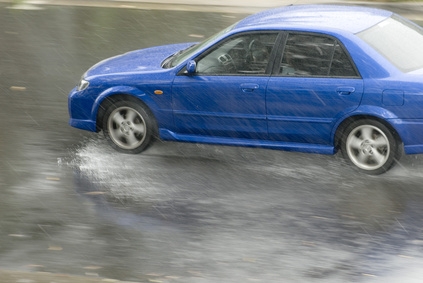
Many of us have seen heavy rainstorms that have left entire towns flooded. But this time your own car has been affected by the flooding. There is water and mud all over the interior of your car and it is already starting to smell like mold. Don't wait for the insurance adjuster to come by. Take initiative and begin repairing your car yourself.
Clean out as much mud and water out of your car as you can because corrosion and mold are setting in already. It is best not to try to start the car, Popular Mechanics advises, because you'll only add to the damage if there is water in the fuel system, transmission or engine.
Disconnect the battery ground strap.
Evaluate how deep the water got in your car. If the waterline is as high as the dashboard, it may be wise to talk to an insurance adjuster about totaling the car and getting another. The mechanical systems and the interior of the car can be dried out with a lot of work, but the electrical systems may be harder to salvage.
Check the dipsticks for the engine and transmission. You must change the oil and filter if there are water droplets clinging to the end of either dipstick before you start the engine. Change the oil and filter after a few hundred miles, too.